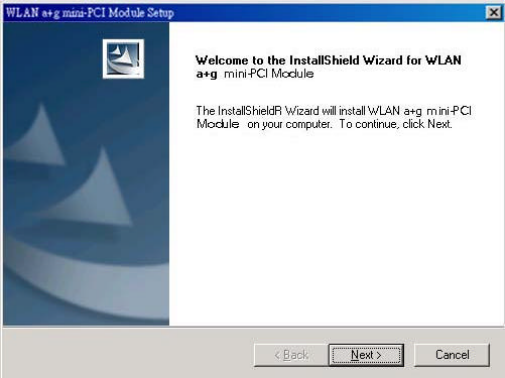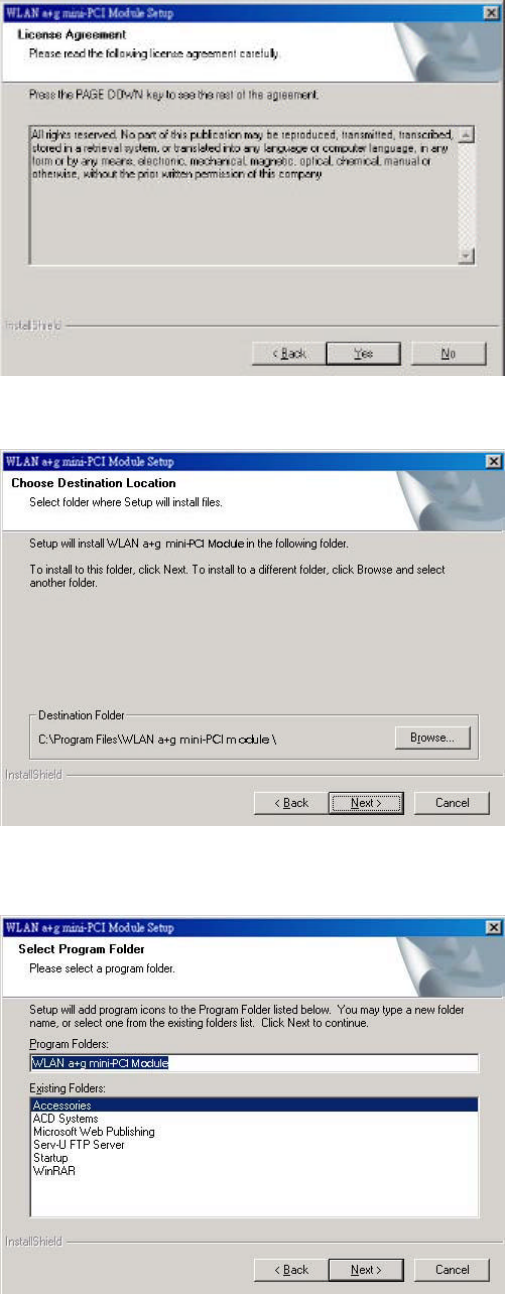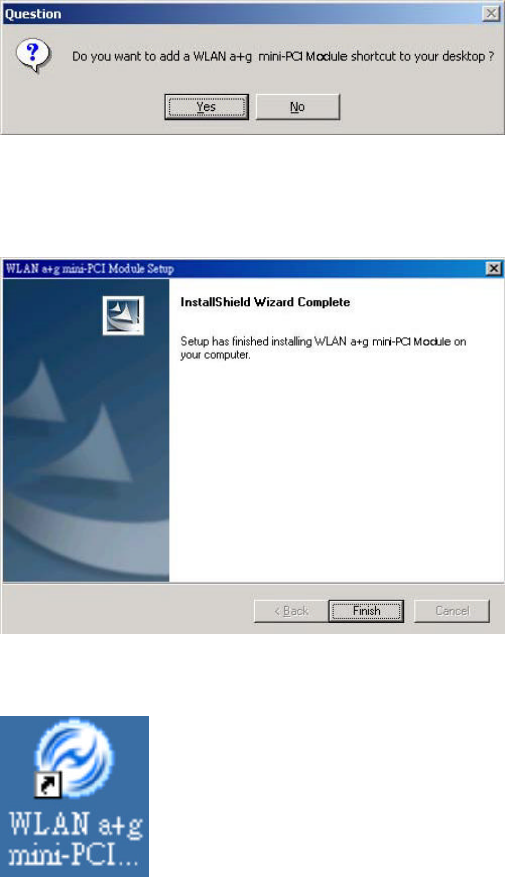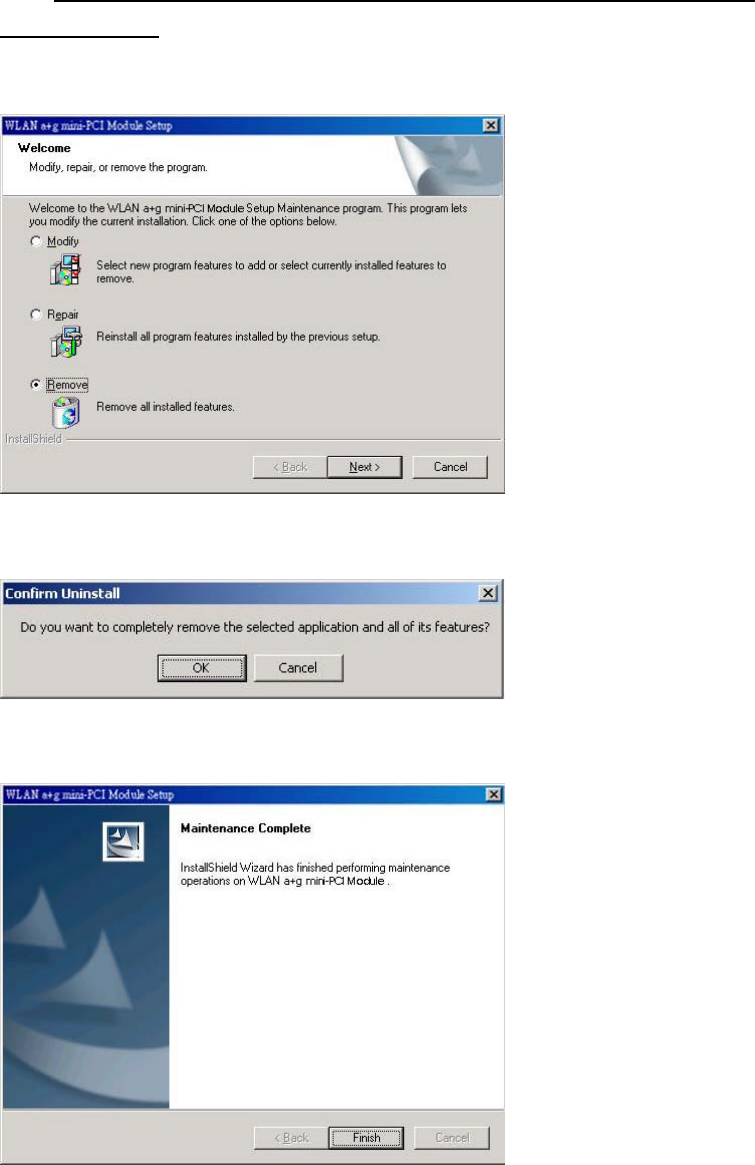Wistron NeWeb MS2143CM6 Notebook Personal Computer User Manual FCC
Wistron NeWeb Corporation Notebook Personal Computer FCC
Contents
module manual part 1
WLAN a+b+g mini-PCI Module
User Manual
Model:
WA-7000
Version: 1.0
Feb 2003
1
Copyright Statement
No part of this publication may be reproduced, stored in a retrieval system, or
transmitted in any form or by any means, whether electronic, mechanical,
photocopying, recording or otherwise without the prior writing of the publisher.
Windows™ 98SE/2000/ME/XP are trademarks of Microsoft® Corp.
Pentium is trademark of Intel.
All copyright reserved.
2
Federal Communication Commission Interference Statement
This equipment has been tested and found to comply with the limits for a Class
B digital device, pursuant to Part 15 of the FCC Rules. These limits are
designed to provide reasonable protection against harmful interference in a
residential installation. This equipment generates, uses and can radiate radio
frequency energy and, if not installed and used in accordance with
the instructions, may cause harmful interference to radio communications.
However, there is no guarantee that interference will not occur in a particular
installation. If this equipment does cause harmful interference to radio or
television reception, which can be determined by turning the equipment off and
on, the user is encouraged to try to correct the interference by one of the
following measures:
- Reorient or relocate the receiving antenna.
- Increase the separation between the equipment and receiver.
- Connect the equipment into an outlet on a circuit different from that to which
the receiver is connected.
- Consult the dealer or an experienced radio/TV technician for help.
FCC Caution: To assure continued compliance, (example - use only shielded
interface cables when connecting to computer or peripheral devices) any
changes or modifications not expressly approved by the party responsible for
compliance could void the user's authority to operate this equipment.
This device complies with Part 15 of the FCC Rules. Operation is subject to the
following two conditions:
(1) This device may not cause harmful interference, and
(2) This device must accept any interference received, including interference
that may cause undesired operation.
IMPORTANT NOTE 1:
This transmitter must not be co-located or operating in conjunction
with any other antenna or transmitter.
IMPORTANT NOTE 2:
This equipment for the band 5150-5350 MHz is only for indoor usage to reduce
potential for harmful interference to co-channel Mobile Satellite systems.

3
Table of Contents
1. INTRODUCTION 4
2. DRIVER/UTILITY INSTALLATION / UNINSTALLATION 4
2.1 INSTALLATION .........................................................................................................4
2.1.1 ADDITIONAL SETUP PROCESSES .............................................................................7
2.1.2 VERIFYING THE DRIVER .........................................................................................7
2.2 UNINSTALLATION.....................................................................................................9
3. CONNECTING TO AN EXISTING NETWORK10
3.1 ADDITIONAL NOTE FOR WINDOWS XP ................................................................12
4. CREATING A NEW NETWORK 13
5. CONFIGURATION 15
5.1 DEVICE CONFIGURATION......................................................................................15
5.1.1 NON-DEFAULT SETTINGS CONFIGURATION ..........................................................16
5.1.2 DEFAULT SETTINGS WINDOWS XP ZERO-CONFIGURATION .................................19

4
1. Introduction
Thank you for purchasing the WLAN a+b+g mini-PCI Module that provides the
easiest way to wireless networking. This User Manual contains detailed instructions in
the operation of this product. Please keep this manual for future reference.
2. Driver/Utility Installation / Uninstallation
2.1 Installation
Note! The Installation Section in this User Manual describes the first-time installation
for Windows. To re-install the driver, please first uninstall the previously
installed driver. See Chapter 2.2 “Uninstallation” section in this User Manual.
Follow the steps below to complete the driver/utility installation:
1. Insert the Installation Software CD into the CD-Rom Drive.
2. Click “Next”.

5
3. Read the License Agreement and click “Yes”.
4. Click “Next” to continue or click “Browse” to choose a destination folder.
5. Click “Next”.

6
6. Click “Yes” to create a shortcut icon on your desktop.
7. Click “Finish”.
8. You should now see the shortcut icon on your desktop.
7
2.1.1 Additional Setup Processes
During software installation procedure, each operating system may prompt different
specific options:
1. Windows 98SE: The system will request the original Windows CD during the
installation process. When the installation is finished, you’ll have to restart your
computer.
2. Windows Me: Please restart your computer when the installation is finished.
3. Windows 2000/XP: Select “Install the software automatically” when the window
with this option appears, and then click “Next” to continue installation.
2.1.2 Verifying the Driver
1. Windows 98SE/Me:
Step 1. Right-click “My Computer” icon on the desktop and choose “Properties”.
Step 2. Select “Device Manager” tab and open “Network adapters”. You should
see your WLAN a+b+g mini-PCI Module in the list. Highlight it and click
“Properties” button.
Step 3. From the “Device status”, you should see the line “This device is working
properly”. If, instead, you see error messages displayed, please remove
this Adapter (highlight this Adapter and click “Remove” button). Restart
your PC and go through the installation process again.
2. Windows 2000:
Step 1. Right-click “My Computer” icon on the desktop and choose “Properties”.
Step 2. Select “Hardware” tab and click “Device Manager”. Open “Network
adapters”. You should see your WLAN a+b+g mini-PCI Module in the list.
Right-click this Adapter and choose “Properties”.
Step 3. From the “Device status”, you should see the line “This device is working
properly”. If, instead, you see error messages displayed, please uninstall
this Adapter (right-click this Adapter from the “Network adapters” list and
choose “Uninstall”). Restart your PC and go through the installation
process again.

8
3. Windows XP:
Step 1. Click Start>Control Panel> System.
Step 2. Select “Hardware” tab, and click “Device Manager”. Open “Network
adapters”. You should see your WLAN a+b+g mini-PCI Module in the list.
Right-click this Adapter and choose “Properties”.
Step 3. From the “Device status”, you should see the line “This device is working
properly”. If, instead, you see error messages displayed, please uninstall
this Adapter (right-click this Adapter from the “Network adapters” list and
choose “Uninstall”). Restart your PC and go through the installation
process again.

9
2.2 Uninstallation
Note! Before uninstallation, please close all running programs.
1. Click Start>Programs>WLAN a+b+g mini-PCI Module>UnInstall WLAN a+b+g
mini-PCI Module.
2. Choose “Remove”. Click “Next”.
3. Click “OK” to start Uninstall.
4. Click “Finish”. Uninstall is now completed.